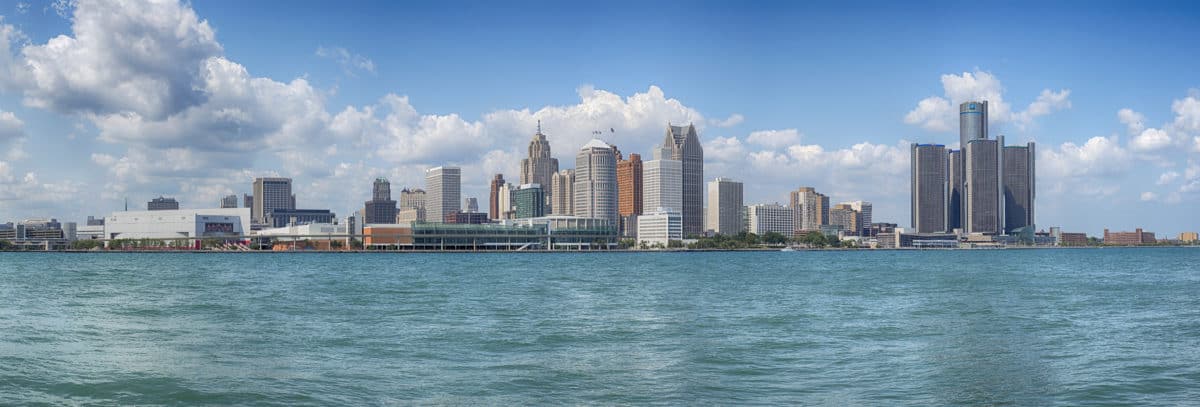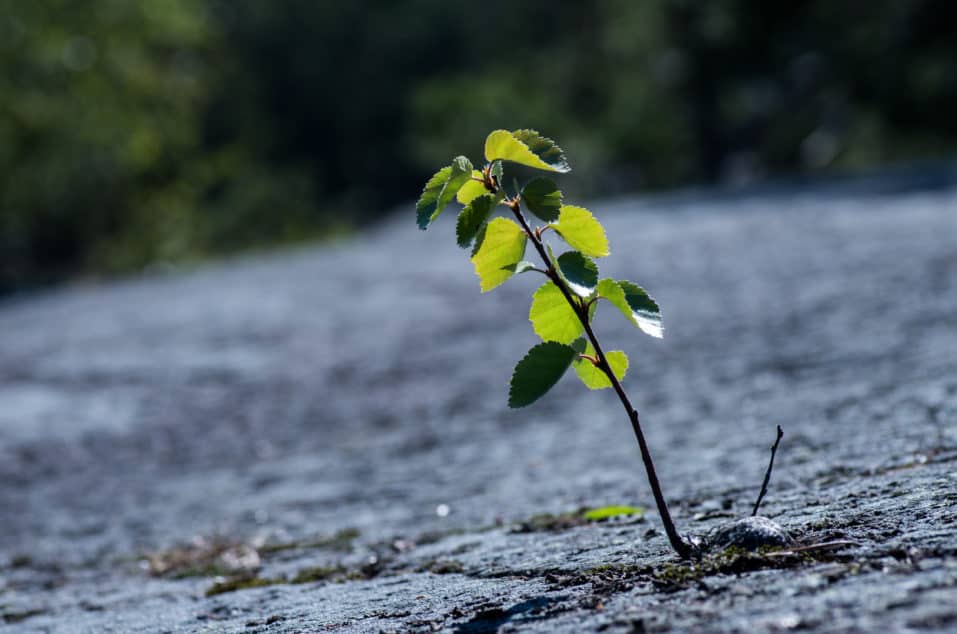
Resilience
The question is no longer “why” but “how” we’re going to stop the ticking clock.
“I want someone to tell me how we’re going to end emissions growth by 2020, and drastically reduce emissions to net zero by the middle of the century”. António Guterres, Secretary General of the UN, addressing political and economic leaders in New York on 23 and 24 September on the issue of combating climate change. Ever since the Rio World Summit in 1992, the recurring question is no longer “why” but “how” we’re going to stop the ticking clock that’s looming over us. One idea that emerged from the many conferences devoted to sustainable development in 2012 was replacing sustainability with resilience.
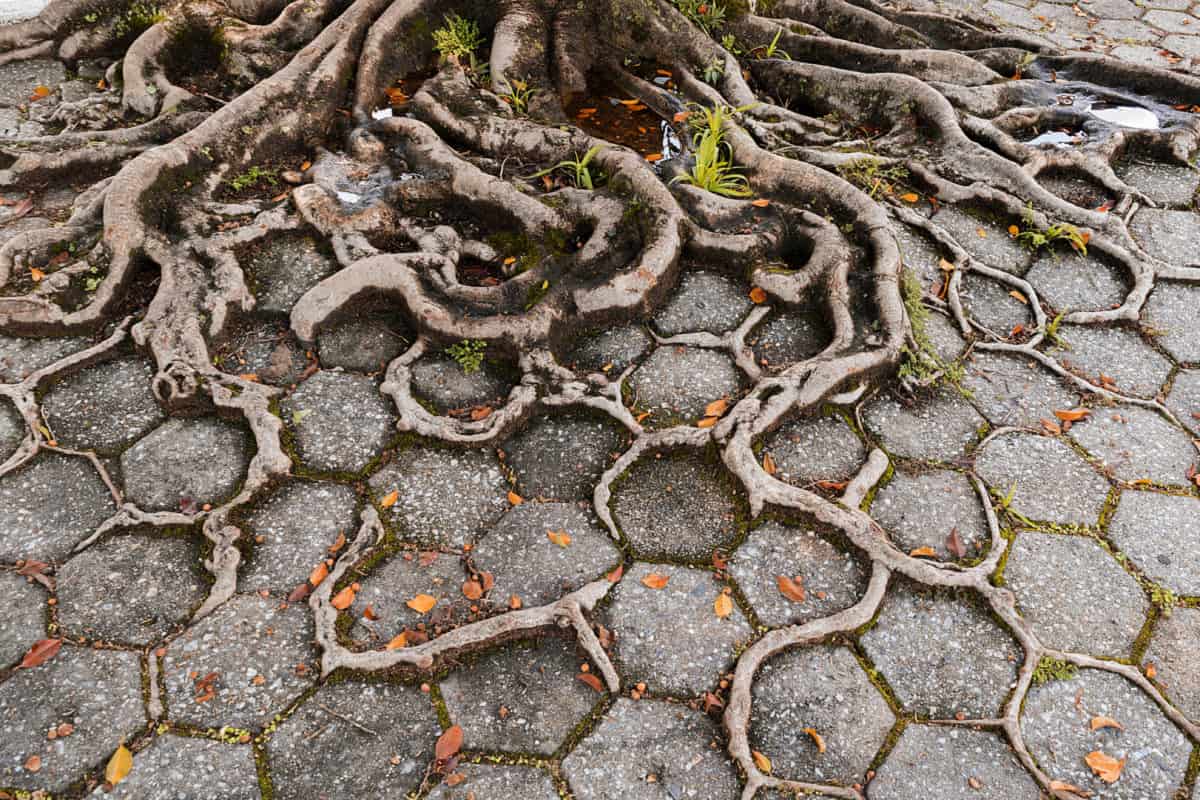
"FLUCTUAT NEC MERGITUR"
Derived from the Latin resilire, which literally means to “jump backwards”, the term evolved into English to give the idea of rebounding, adopting a more positive connotation. It also appeared in the 20th century in French mechanical vocabulary, referring to the shocks and deformations material can undergo without breaking. The term was further popularised in psychology and in the essays of Boris Cyrulnik, who explained it as “the art of navigating through torrents”.
Individuals are most resilient when they survive, adapt, transform and grow, regardless of the chronic stress.
‐ Noémie Fompeyrine, in charge of Paris City Hall’s own resilience initiative
“Fluctuat nec mergitur”, which is the motto of the city of Paris, “meansbeaten by the waves, but never running away.The very metaphor of resilience”, explains Noémie Fompeyrine, in charge of Paris City Hall’s own resilience initiative. “Individuals, communities, institutions, businesses and systems, like a city, are most resilient when they survive, adapt, transform and grow, regardless of the chronic stress (pollution, unemployment, a scarcity of resources, recurring violence …) and shocks (bombings, fires, earthquakes, flooding …) that they experience. These processes help us do better – both on good days and bad – for the benefit of everyone”.
In a city or company’s fight against climate change, these resilience processes target a maximum number of objectives, including preserving the economy and biodiversity, reducing carbon footprints, the equity and solidarity of residents, welcoming migrants … “As such, resilience covers every part of the system and should be considered as part of a wider holistic approach”.
A number of cities and regions have embodied this resilience. They include Detroit, Loos-en-Gohelle, and southern Alsace. To the others – hesitant, as fragile and destitute as they’ve ever been – they’re showing them the way.
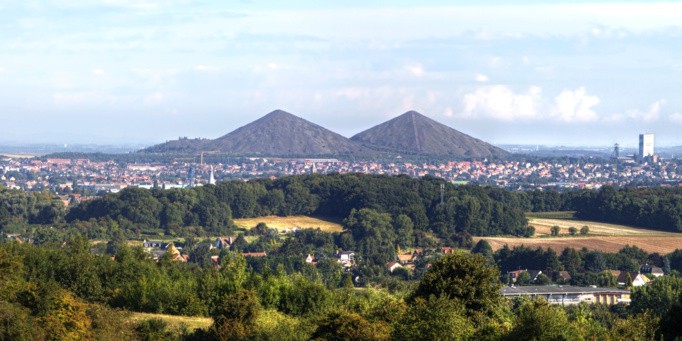
“Resilience success stories”
Only one field trip was planned as part of the COP21 conference back in 2015, the visit of 1,000 heads of state and decision makers from across the globe to Loos-en-Gohelle, a small rundown town in Nord-Pas-de-Calais, France, with a population of just 7,000. That same year, in eastern France’s Haut-Rhin region, Ungersheim and its 2,200 residents were the subject of a documentary, What Are We Waiting For? by Marie-Monique Robin. Archetypes of polluting industrial cities of the mid-20thcentury, making their living from extracting coal and potash respectively, the two towns would go on to become models of resilience and sustainable development in the 21st century.
In the same way, in Kingersheim, another small town in the suburbs of Mulhouse in north-eastern France, Raphaël Glucksman and Diana Filippova would come to take inspiration from their initiatives, deciding to jointly develop the town’s public spaces in November 2018. Across the Atlantic, in Detroit, the beleaguered home of the auto industry, asphyxiated in 2010 by debt of some 18.5 billion dollars, the city has found a second wind in less than five years by providing for its own essential needs by itself.
So how have these regions, struck by the shock of de-industrialisation, bruised and battered, turned their downfall into “success stories” that today fascinate public figures and the media alike? How have they managed to rebound and provide a framework for the resilient regions of tomorrow? It’s all thanks to sustainable, innovative and desirable development, built precisely on the foundations of a past industrial world.
‐
Loos-en-Gohelle, southern Alsace, Detroit … three stricken regions that have demonstrated exemplary resilience.
So how have these regions, struck by the shock of de-industrialisation, bruised and battered, turned their downfall into “success stories” that today fascinate public figures and the media alike? How have they managed to rebound and provide a framework for the resilient regions of tomorrow? It’s all thanks to sustainable, innovative and desirable development, built precisely on the foundations of a past industrial world.
It’s their mayors and leaders to whom the majority of these model towns and cities owe their gratitude. In Loos-en-Gohelle, for example, Jean-François Caron, a physiotherapist, activist and then elected environmentalist, son of the previous mayor, has worked since 2001 to build and support a new model of “prosperity without growth”, to use Tim Jackson’s expression, in order to turn over a new leaf from coal. In southern Alsace, Joseph Spiegel, known by everyone as “Joe”, mayor of Kingersheim, Jean-Claude Mensch, mayor of Ungersheim, Michèle Lutz, the first female mayor of Mulhouse, and Cécile Sornin, in charge of developing the social and cooperative economy and participatory democracy, collectively play the role of stalwarts of this resilience.
In Detroit, however, it was the citizens themselves who came together in 2012 to avoid the total destruction of their city. Unable to rely on their mayor David Bing or the municipal council any longer, the city, on the verge of bankruptcy, was about to be taken over by crisis management teams. In the end, the mayor of Detroit and the municipal council held onto their roles, but with limited decision-making powers. A financial council was made responsible for issuing recommendations and looking at tax issues. But residents, scorned by the corruption of previous administrations, as well as unsuitable or unsuccessful projects, are fighting back.
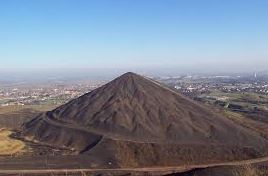
These stakeholders, from all walks of life, have ceased to have trust in destiny and have established, within their individual communities and neighbourhoods, a form of participatory democracy that involves residents themselves in the transition process. Here, the municipal council is supported or replaced by “participatory councils” and “participatory commissions”. In Ungersheim, residents can also get involved – once they’ve signed a charter of good conduct – placing the focus squarely on the well-being of the population in all their activities.
All these individuals and groups have made a choice for their local region: withdrawal. They’ve definitively turned their backs on their region’s past industrial activities – coal for Loos-en-Gohelle, fertiliser for Ungersheim, textiles for Mulhouse and cars for Detroit. To pick themselves up again and move on, as Jean-François Caron put it, “changing their lenses”, changing their representation, is essential.
Firstly, it’s about looking to the past with pride. It’s not a question of living with the shame and guilt of failure. As an example, Loos-en-Gohelle has had its two slag heaps, symbols of a painful past, classified as UNESCO World Heritage sites. They’ve been transformed into cultural spaces. “We’ve turned them into land art by painting a heart on one of the flanks”, said Jean-François Caron.“We no longer regard them as the shame of the north, but we’ve simply said, in the end, these heaps were our pyramids”. Residents in Detroit have also painted their history as frescoes on some of the buildings that line the huge avenues designed for cars. Nothing sad comes out of these testimonies.
Next comes an ambitious, long-term vision for the future. Mulhouse has turned its former foundry, now renamed KM0, into a start-up campus like the famous Station F in Paris. In Loos-en-Gohelle, the 11/19 base, a former mining site, has been transformed into a “development lab” for eco-construction, the first area in the city to be led by a sustainable development policy, like in southern Alsace or Detroit. The policy aims at three outcomes – environmental (decreasing their dependence on fossil fuels), social (reducing the cost of living, water and energy savings, strengthening social bonds) and economic (promoting short supply chains, value-adding skills … ).
All these regions have largely abandoned fossil fuels. Detroit has become the bike capital. Children in Ungersheim go to school in carriages. Loos-en-Gohelle, Kingersheim and Ungersheim have all installed photovoltaic panels throughout their communities. Ungersheim has its own organic garden that supplies a quarter of the town and the school canteens. In Loos, gardens are being shared between buildings. Brownfield land that dots the city of Mulhouse is being converted slowly but surely into organic farmland managed by Amap and other cooperatives. Their own crops and those from fields surrounding the city are being used to feed residents, making the journey directly, in the words of the mayor, “from our land to our plates”.
Across the Atlantic, like in Nord-Pas-de-Calais and southern Alsace, community repair workshops, recycling and building cleaning schemes, as well as educational projects, are contributing to the weaving of new social cohesion.
To reinforce the bonds between residents and the local economy, Detroit has experimented with several different models of food banks. The people of Ungersheim can buy certified organic products from the village with their own local currency: radishes. Community grocery stores are popping up in Mulhouse, though some local residents, as Cécile Sornin explains, worry “you’re attracting the poor!”.
As such, a network of non-profit community organisations, part of the social and cooperative economy, has emerged, offering a set of alternative lifestyle, even anti-capitalist choices … which is attracting capital. But property investors could weaken the system. In Detroit, for example, Ford announced in June 2018 that it would acquire Central Station, the city’s former railway station, and turn it into a research centre for self-driving electric vehicles by 2022.

(Français) Interview avec Sébastien Bohler, docteur en neurosciences, rédacteur en chef de Cerveau & Psycho, et auteur de l’essai Le Bug humain*.
‐
(Français) Notre cerveau. Comme celui de tous les mammifères, il est programmé depuis des centaines de millions d’années pour poursuivre cinq objectifs essentiels liés à sa survie : manger, se reproduire, acquérir du prestige social, produire un minimum d’efforts et glaner un maximum d’informations sur notre environnement.
Chaque fois que nous produisons une de ces actions, qui assure notre survie, nous sommes récompensés par une partie de notre cerveau, le striatum, qui nous envoie de la dopamine, du plaisir.
Mais ce déterminisme biologique fait aussi que, pour avoir toujours plus de plaisir, l’on meurt plus de suralimentation que de faim, dans le monde, que l’on consomme toujours plus de vidéos pornographiques (136 milliards à l’année, ce qui représente 38 % du trafic internet), qu’on passe toujours plus de temps sur les réseaux sociaux, favorisant le développement d’une industrie du numérique qui émet autant de gaz à effet de serre que le transport aérien.
Nous sommes habités par un principe de croissance : si nos actes ne produisent pas toujours plus de stimulation, la production de dopamine baisse, le plaisir s’émousse et la seule solution pour la relancer c’est d’augmenter nos consommations.
(Français) Le rôle de la technologie se limiterait-il à l’assouvissement de ces désirs ?
‐
(Français) L’homme a créé toujours plus d’outils, de technologie, pour atteindre ses objectifs instantanément, sans se fatiguer, sans limites, ce qui alimente aussi ses appétits. Nous avons développé les moyens technologiques d’un dieu avec les besoins d’un primate. Mais si l’homme a développé la machine pour mieux vivre, à présent l’homme dépend de la machine.
(Français) Un cercle infernal en quelque sorte… Comment en sortir ?
‐
(Français) Il y a deux solutions. La première consiste à comprendre comment on fonctionne, se livrer à une introspection scientifique : si je veux toujours plus d’infos toujours plus vite, toujours plus de « followers » et de « like » sur les réseaux sociaux, de nourriture, de vêtements, c’est parce que mon striatum m’y pousse. Se pose alors la question de la liberté. Suis-je libre si c’est mon striatum qui décide ? La liberté est-ce uniquement faire ce que l’on veut, quand on veut, consommer toujours davantage ? N’est-ce pas plutôt de choisir son bien ?
La deuxième est de détourner son striatum des cinq objectifs que je vous ai cités, et l’inciter à valoriser d’autres comportements, comme l’altruisme, pour l’estime de soi.
(Français) Comme ceux de mère Teresa que vous citez dans votre dernier livre – Le Bug humain ?
‐ []
(Français) Il y a deux ans, des chercheurs zurichois découvraient, en étudiant les comportements de générosité dans la population, qu’ils étaient plus solidement ancrés chez les femmes que chez les hommes, et qu’ils activaient chez elles les circuits de la récompense et du plaisir. Indéniablement, l’altruisme les rendait heureuses. Sans doute ces femmes ont-elles été encouragées par l’éducation à faire preuve de sollicitude et d’empathie, quand les garçons ont été incités à se battre. Si on se penche sur la biographie de mère Teresa, on constate qu’elle a été soumise à ce « conditionnement » de manière poussée par sa mère.
(Français) Il faudrait donc éduquer les hommes comme les filles à l’altruisme ?
‐
(Français) Oui, il faudrait rééduquer l’humain par l’humain. Il faudrait que tous les habitants de la planète mènent le même combat, dans un système concerté ou – autre scénario – régi par une dictature écologique mondiale : construire un avenir où les échanges, le plaisir d’apprendre, de se poser des questions, de marcher dans la forêt, de peindre ou de jouer d’un instrument prennent le pas sur des besoins primaires. De nouvelles normes sociales, un nouveau discours dominant (émanant à la fois des médias, de la famille, des personnalités publiques…), pourraient modeler de nouveaux modes de pensées, de nouveaux comportements et nous déshabituer de la technologie et des gadgets.
On sait depuis quatre ans, grâce à des recherches menées à l’université de Californie, que l’on peut activer la dopamine grâce à la connaissance. Ce serait une vraie rééducation qu’adultes et enfants s’habituent à se concentrer sur un temps long, à ne pas céder aux distractions. La méditation aide à cela. C’est sans danger pour l’environnement : cela ne produit pas de gaz à effet de serre.
Mais le premier qui fait cela tout seul est mort.
* Le Bug humain. Pourquoi notre cerveau nous pousse à détruire la planète et comment l’en empêcher,paru le 7 février 2019 chez Robert Laffont, 270 p.
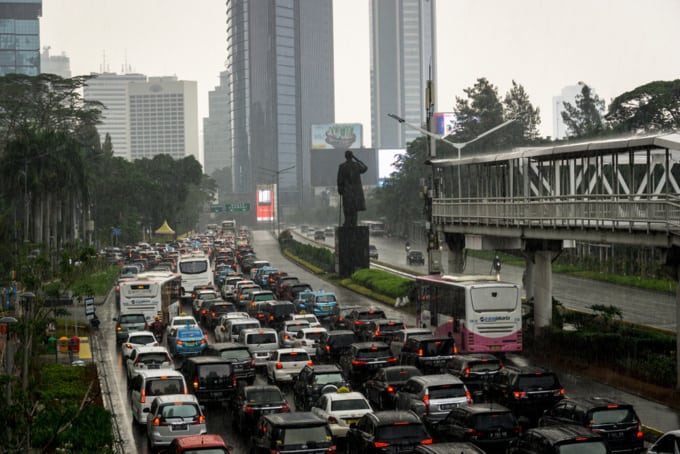
The cities facing climate change
Not all cities are equal in the face of climate change. Some have published and committed to resilience strategies. Others are slow to take action … or simply give up entirely.
French scientists have recently revised up global warming figures, predicting +7° by 2100. Studies led by the country’s National Centre for Scientific Research (CNRS), the Commissariat for Atomic Energy and Alternative Energies (CEA) and Météo-France revealed in mid-September, terrifyingly, that 70% of the world’s population will be living in towns and cities by the year 2050. It’s primarily these towns and cities that are responsible for adhering to the Paris Climate Agreement. They’re part of the problem (towns and cities consume two-thirds of the world’s energy and are responsible for 70% of greenhouse gas emissions) but they’re also potential disaster victims and must find solutions for the future as our political centres of activity and the veritable engines of our economies (generating 80% of our GDP), as well as being centres of innovation.
The latest government reports have reminded us of the efforts needed to stay below the 2° mark. No longer selling fossil-fuelled cars by 2035, reducing building emissions by at least 80% from their current level by 2050, achieving carbon neutral status by 2050, reducing CO2 emissions by 50% by 2030… These aren’t natural evolutions, but radical changes that society must face up to.
Because change is already here. Children will soon no longer read in geography books, for example, that Paris is an “ideally temperate” city. In 2003, a heatwave in the French capital killed 700 of its residents. Climate change will only make such heatwaves more frequent and intense. And while Paris is one of the largest European capitals, it only has 14.5 m2of green space per capita, against 45 m2in London and 321 m2in Rome. Stone and asphalt, the impervious surfaces that cover the city not only increase intramural heat, but also the city’s vulnerability to flooding, particularly during so-called “100-year floods”.
France’s capital has committed to an “exemplary” resilience strategy, shared on the “100 Resilient Cities” network, of which it is a member.
“When we developed our strategy”, explains Noémie Fompeyrine, responsible for resilience projects at Paris City Hall, “school and college playgrounds caught our attention”.They add up to some 70 hectares of outdoor space throughout the city, all easily identifiable and familiar to local residents. No Parisian lives more than 250 metres away from one of these yards. They could easily become locally-accessible public spaces, outside the school day”. Paris’ resilience strategy plans to renovate 761 playgrounds, transforming each one into an “oasis”, “designed with local residents and sometimes by the children themselves”, she explains. The ground, either soil or covered with a porous coating and painted in natural colours, will be shaded by orchards as part of an educational garden. This kind of “oasis” will ensure both a decrease in temperature in the summer and milder winters, while facilitating the flow of water during storms. “Thanks to this type of oasis, we’ll achieve a maximum number of our targets: reinforcing social bonds, biodiversity, minimising the risk of flooding, reducing our environmental footprint, as well as providing educational support”. Three pilot schemes have been launched in the 12th, 18thand 20th arrondissementsof Paris at a cost of 1 million euros.
Only a quarter of European cities have so far taken action. “They’re denying the problem”, according to philosopher Dominique Bourg,“so that it simply goes away”. But it isn’t just a climate catastrophe that cities will face, but rather several simultaneous cataclysms, according to a study published in November 2018 in the Nature Climate Changejournal. Coastal areas will be most vulnerable, and not all cities are equally resilient to modern climate challenges. “New York spends freely to protect itself from rising water levels” was the Le Figaroheadline on 25 October. But St. Martin in the West Indies, for example, devastated two years ago by Hurricane Irma, which left eleven dead and almost 8,000 of its 35,000 residents displaced, is struggling to prepare for the future. “We need to build more resiliently, but it costs four times as much to integrate earthquake protection”, explains Daniel Gibbs, Chairman of the Regional Council. “Cost isn’t the only barrier, administrative red tape is another”, he continues.
“Resilience is a slow, laborious process; it requires long-term vision and a great deal of flexibility”, adds Noémie Fompeyrine. “But the climate clock is ticking faster and faster than ever. For short-termists, the challenge isn’t sustainable”. As such, Indonesian President Joko Widodo announced the move of his capital city from Jakarta to the island of Borneo. Polluted and overcrowded, it is particularly threatened with becoming engulfed. “At the current rate, a third of thecity could be under water by 2050, according to environmental experts. The weight of buildings and skyscrapers is further weakening the foun dations of the city, which was built on swamps”, published the Les Echosnewspaper on 16 August.
The inequality amongst our cities can be seen in their relationships with nature, depending on their ability to get along – or not – with Mother Nature, instead of trying to challenge her. Philosopher Joëlle Zask spoke of the “anthropisation of nature” to define this relationship of maintenance and partnership. Only the best infrastructure – green infrastructure – can help promote resilience by absorbing carbon, reducing the risk of flooding, regulating temperature, reducing noise …
An American study on the role of public space in social cohesion (Public Space Design and Social Cohesion, Patricia Aelbrecht, Quentin Stevens – 2019) underlined the benefits of public parks in Philadelphia. They save a hundred times more than they cost every year, including avoided expenses for flood and storm management, antisocial behaviour, healthcare …
all nature-based solutions – a concept that has emerged alongside resilience. And that’s certainly no coincidence.

